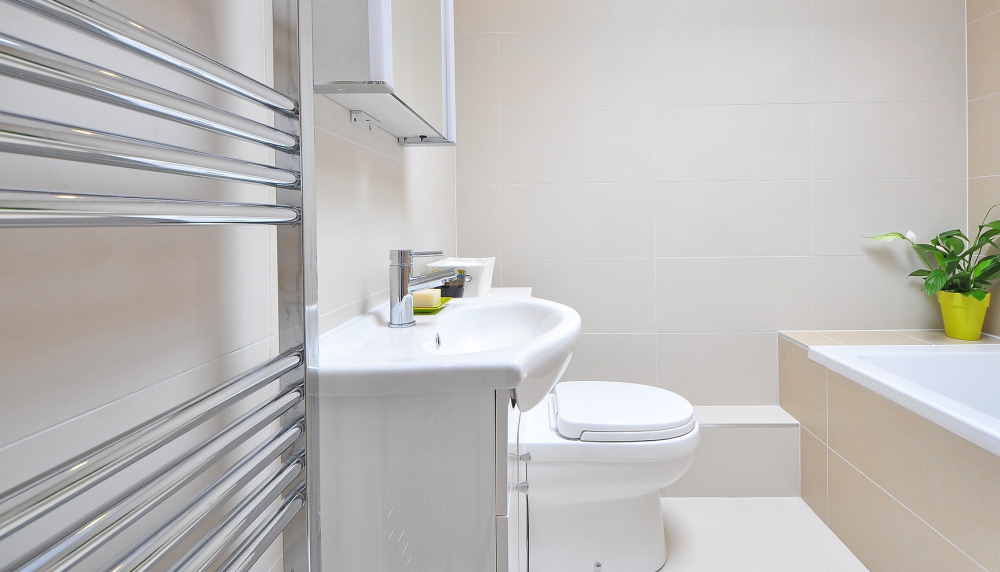Using a bathroom radiator for warmth and as a dehumidifier is not recommended. Radiators are designed to heat up a room and may not be able to sufficiently dry the air in a bathroom. If you want to use a radiator in the bathroom, it is best to use a separate dehumidifier.
Bathroom radiators work by heating the air in the room, which in turn warms up objects in the room, such as the walls and floor. The heat is then retained in the objects, keeping them warm. The warm air then rises, which is why radiators are typically installed near the floor, as the heat is circulated throughout the room.
The inside of a bathroom radiator typically contains a series of pipes, fins, and an electric heating element. The pipes are filled with hot water or steam, depending on the type of radiator, and the fins help to disperse the heat throughout the room. The electric heating element is used to add additional heat when needed.
Why does the bathroom radiator keep rusting?
The bathroom radiator may be rusting due to moisture in the air, which encourages the process of oxidation. If the radiator is not properly sealed, then water can seep in and cause rusting. Other possible causes could be an old radiator, insufficient ventilation, or inadequate maintenance.
Why does the bathroom radiator keep filling with air?
The most likely cause of a bathroom radiator filling with air is a problem with the filling loop. The filling loop is the system that fills the radiator with water and is connected to the water mains. If there is a leak in the filling loop, air can enter the system and fill the radiator. To fix the problem, the filling loop must be checked for any leaks and repaired or replaced if necessary.
What to do when the bathroom radiator leaks?
If the bathroom radiator is leaking, it is important to act quickly to stop the leak and prevent further water damage. The first step is to turn off the radiator’s water supply. This can usually be done by turning the valve on the wall near the radiator. Once the water supply is off, the radiator needs to be drained. This can be done by turning the valve at the bottom of the radiator. Once the radiator is empty, the leak needs to be identified. If the leak is coming from the valve, the valve needs to be replaced. If the leak is coming from a joint or a crack in the radiator, the joint or crack needs to be soldered or sealed. If the radiator is beyond repair, it should be replaced.
How to fill up a bathroom radiator?
- Turn off the water supply to the radiator. This is usually done by turning a valve at the base of the radiator.
- Attach a hose to the bleed valve, which is usually located at the top of the radiator.
- Open the valve and allow the air to escape from the radiator.
- Close the valve when water starts to come out.
- Fill a bucket with cold water and pour it into the radiator until it is full.
- Turn on the water supply to the radiator.
- Open the bleed valve and allow the air to escape.
- Close the valve when the water starts to come out.
- Check the temperature of the radiator with a thermometer.
- Adjust the thermostat on the wall to the desired temperature.
Can a bathroom radiator be a dehumidifier?
No, a bathroom radiator cannot be a dehumidifier. While radiators can provide warmth and dry out a room, they are not designed for the purpose of dehumidifying. Dehumidifiers are designed to actively remove moisture from the air, while radiators simply provide heat and can help to dry out the air passively. A ventilation system in your bathroom can be used as a dehumidifier.
Bathroom radiators efficiency and usage
Bathroom radiators are generally quite efficient at heating the room and can, when used correctly, be a cost-effective way to heat a bathroom. The best way to use a bathroom radiator is to set it on a timer, as this will ensure that the room is heated when needed, without wasting energy. It is also important to ensure that the bathroom is well-ventilated, to allow the heat to circulate around the room, and to avoid the build-up of condensation.
